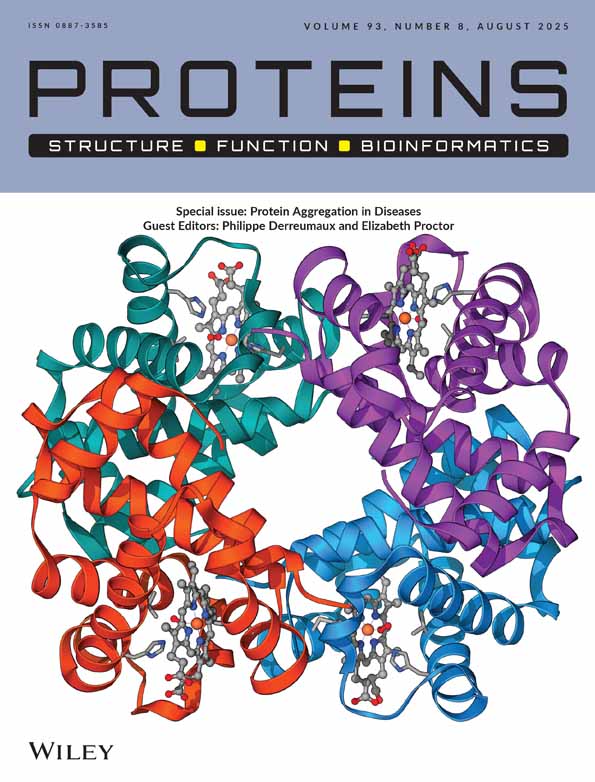Addressing the issue of sequence-to-structure alignments in comparative modeling of CASP3 target proteins†
This article is a US Government work and, as such, is in the public domain in the United States of America.
Abstract
During a blind protein structure prediction experiment (the third round of the Critical Assessment of Techniques for Protein Structure Prediction; URL http://PredictionCenter.llnl.gov/casp3/), four target proteins, T0047, T0048, T0055, and T0070, were modeled by comparison. These proteins display 62%, 29%, 24%, and 19% sequence identity, respectively, to the structurally homologous proteins most similar in sequence. The issue of sequence-to-structure alignment in cases of low sequence homology was the main emphasis. Selection of alignments was made by constructing and evaluating three-dimensional models based on series of samples produced mainly by automatic multiple sequence alignments. Sequence-to-structure alignments were correct in all but two regions, in which significant changes in target structures compared with related proteins were the source of errors. Template choice is an important determinant of model quality, and a correct selection was made of a lower homology template for modeling of T0070; however, in the case of T0055, a template with 8% greater sequence homology proved deceptive. Loops and some ungapped template regions were assigned conformations taken from other proteins. Using fragments from homologous structures led to improvement over template backbone more often than cases in which nonhomologous structures were the source. The results also indicate that side-chain prediction accuracy depends not only on sequence similarity but also on accuracy of the backbone. Proteins Suppl 1999;3:73–80. Published 1999 Wiley-Liss, Inc.




